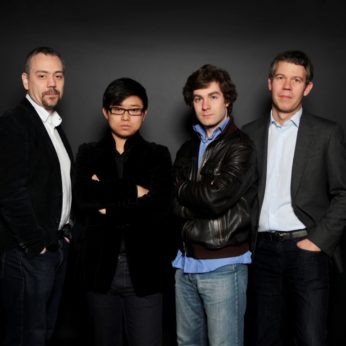Composer: George Onslow (b. 1784 - d. 1853)
Performance date: 25/06/2011
Venue: St. Brendan’s Church
Composition Year: 1834
Duration: 00:25:39
Recording Engineer: Anton Timoney, RTÉ lyric fm
Instrumentation: 2vn, va, vc
Instrumentation Category:String Quartet
Artists:
Quatuor Diotima (Naaman Sluchin, Yun Peng Zhao [violins], Franck Chevalier [viola], Pierre Morlet [cello]) -
[quartet]

Copyright © 2025 West Cork Music. All rights reserved.
Designed and developed by Matrix Internet